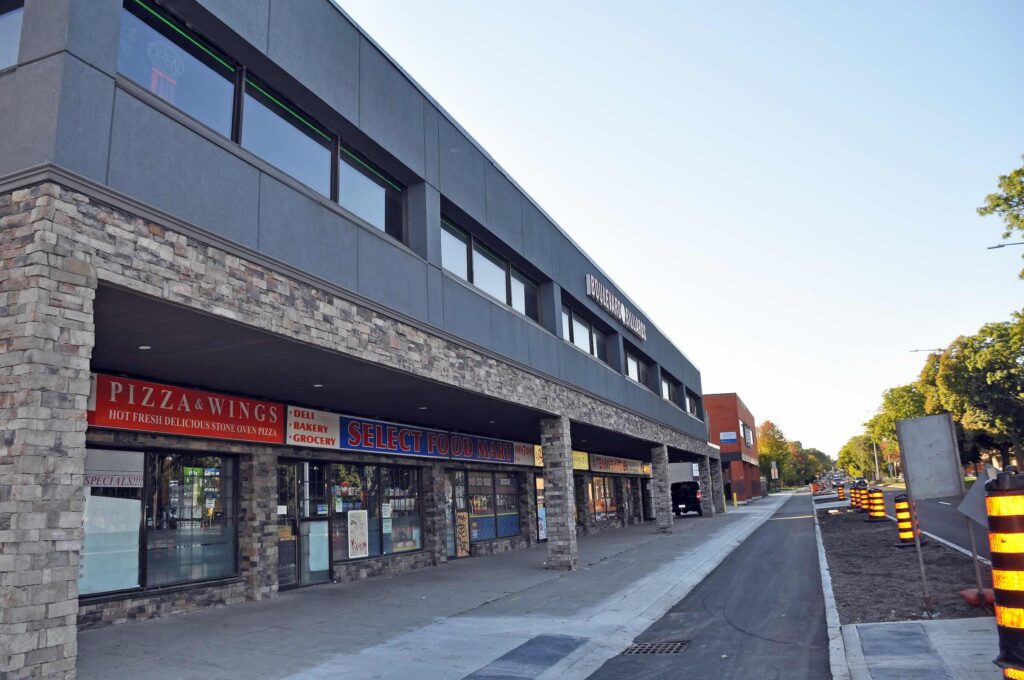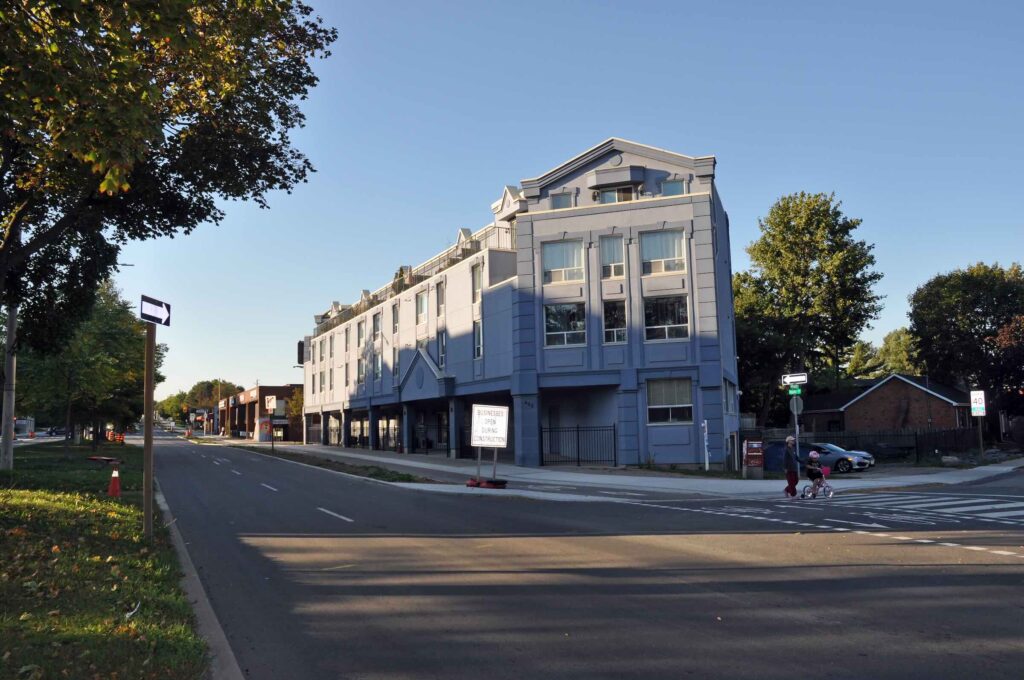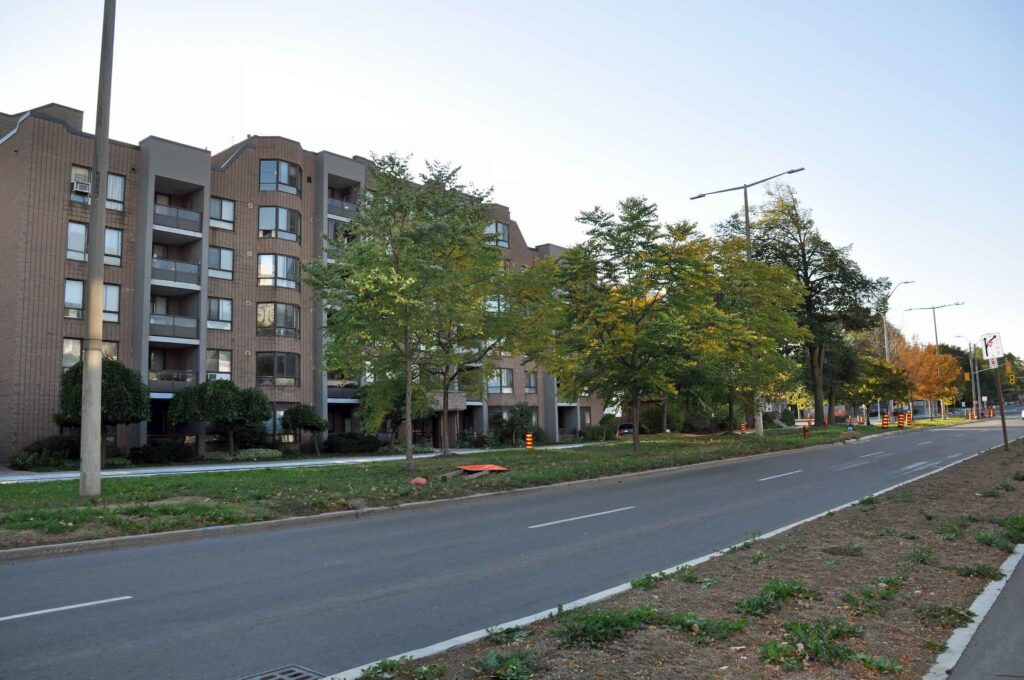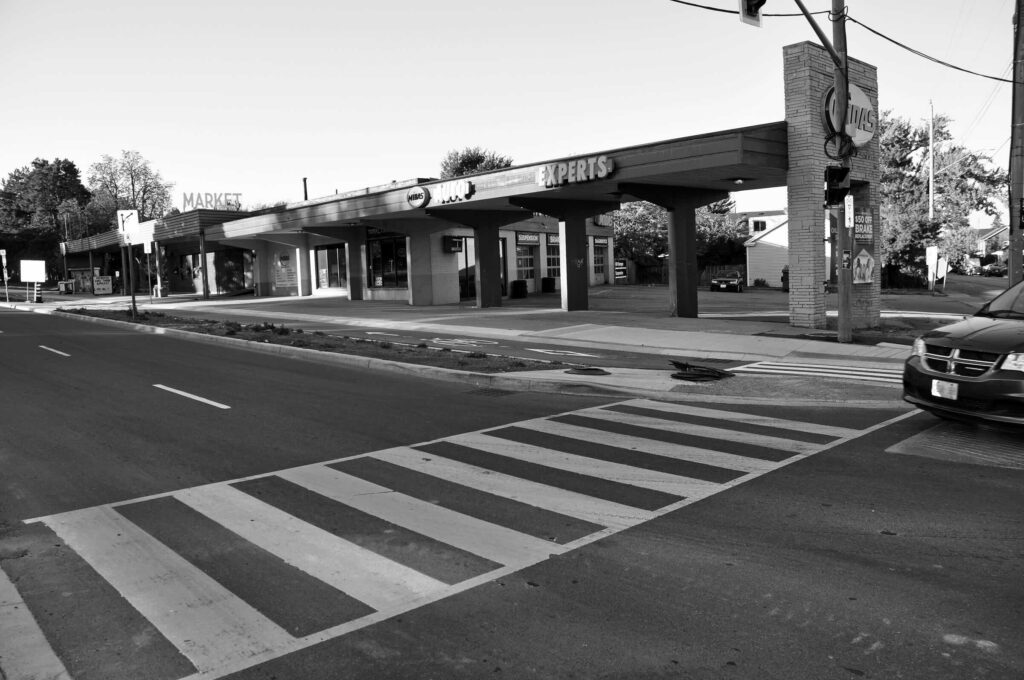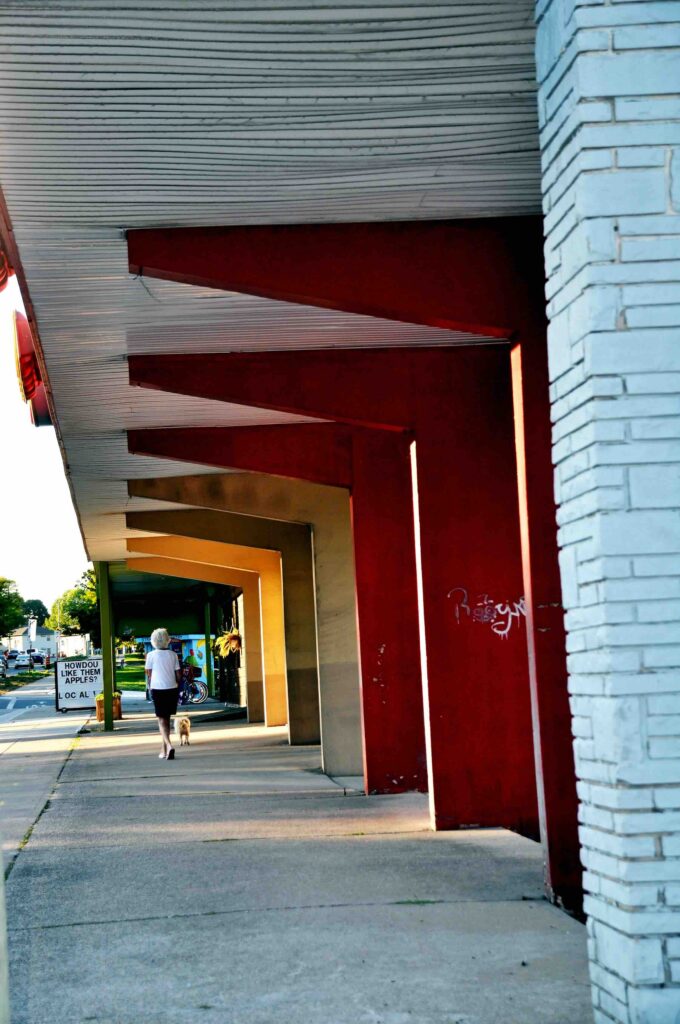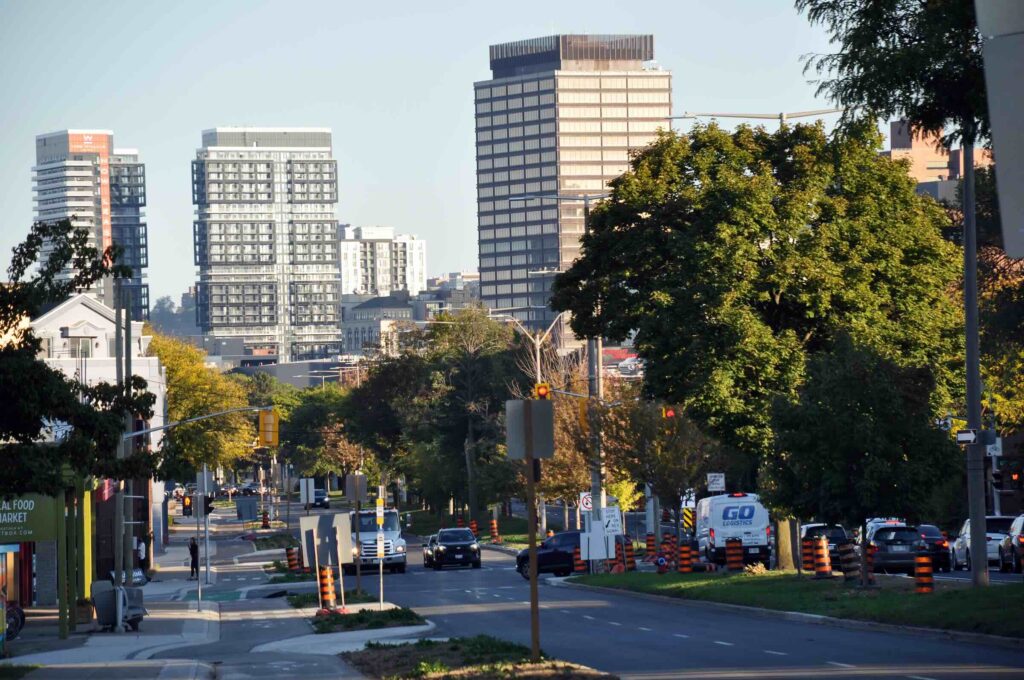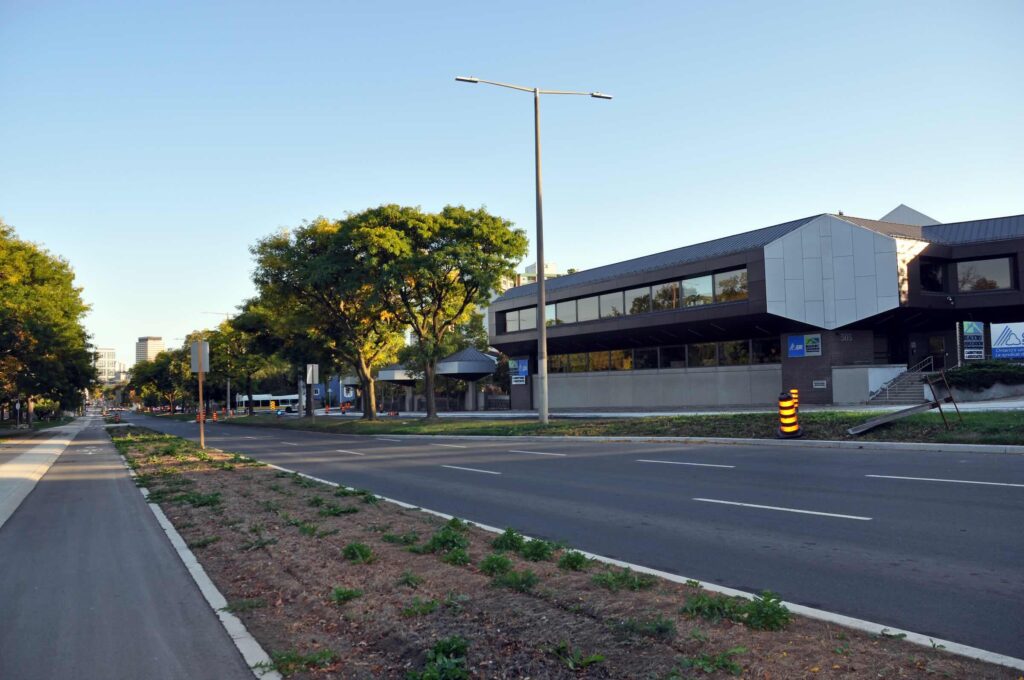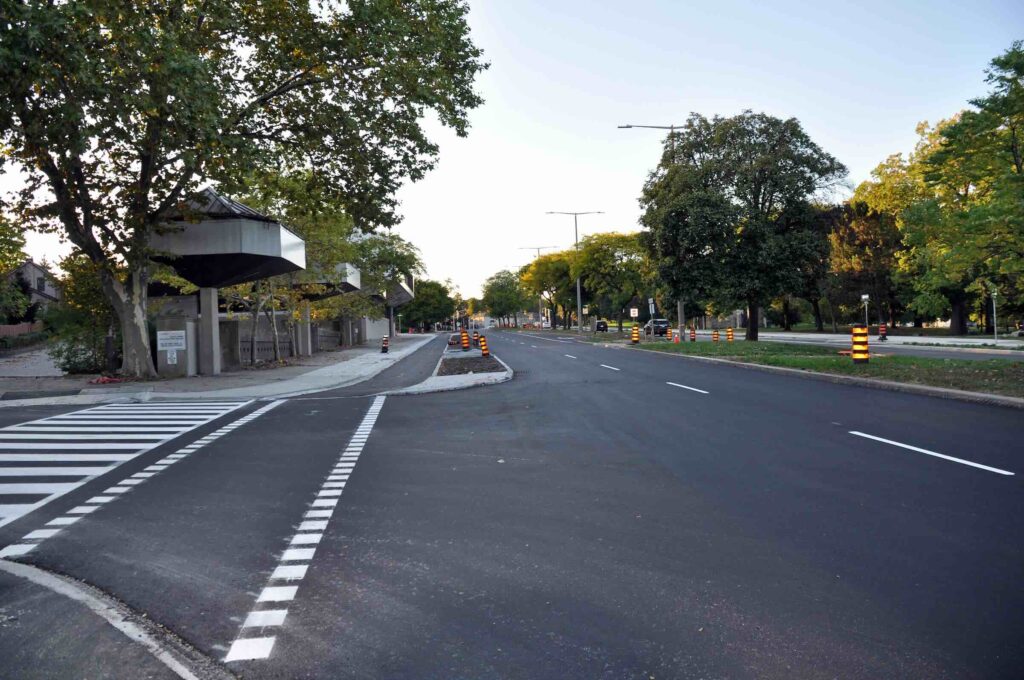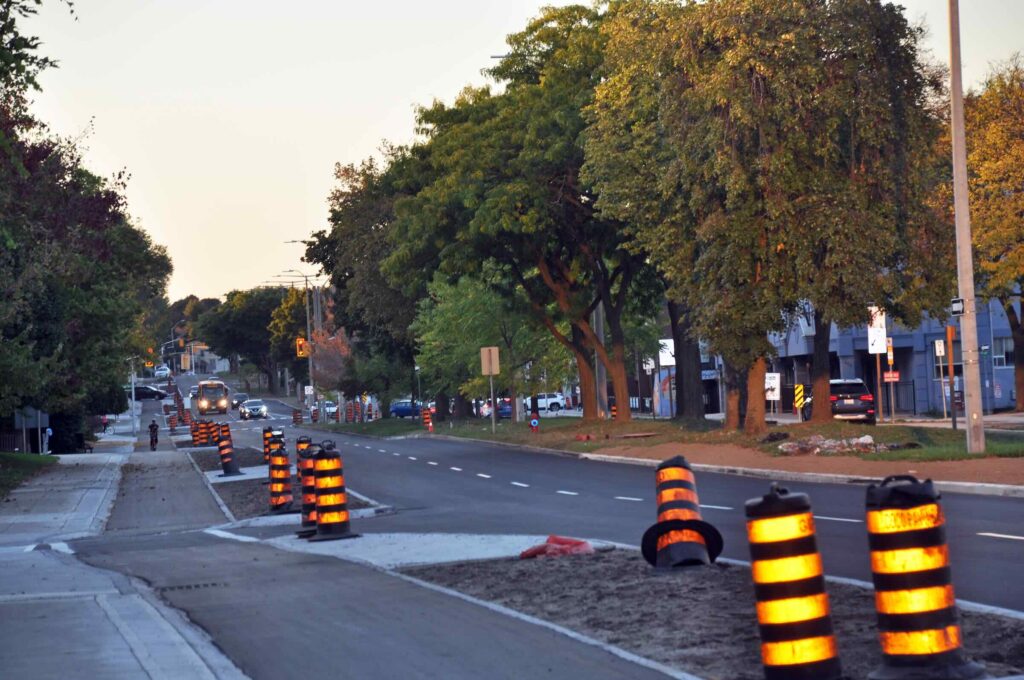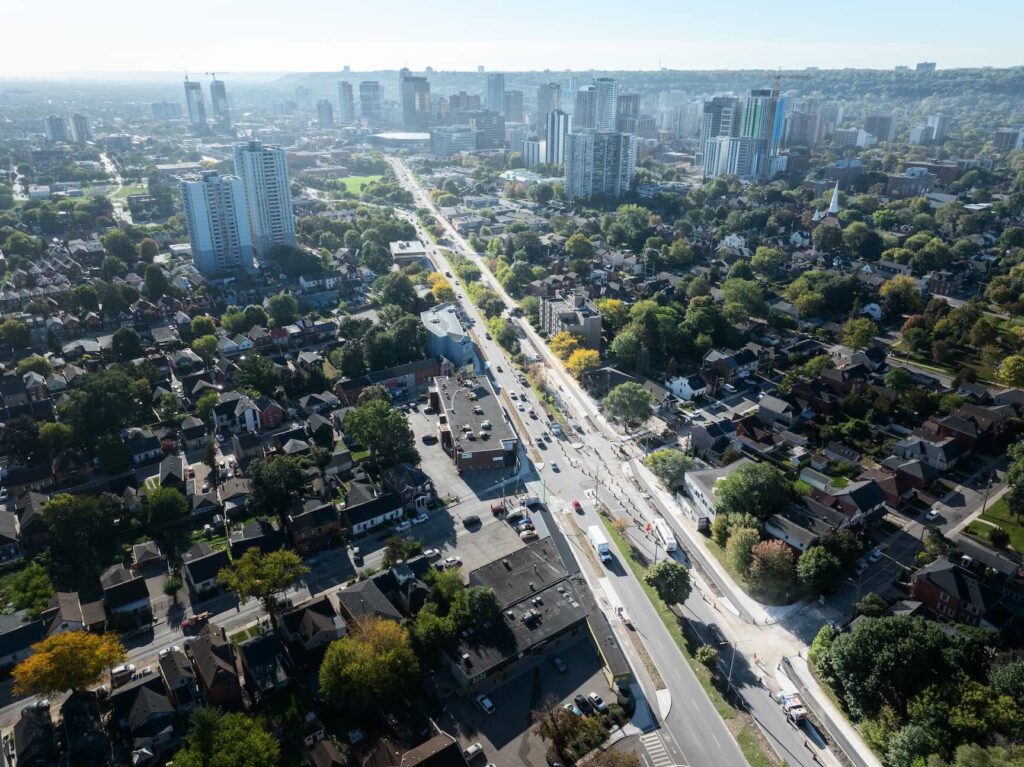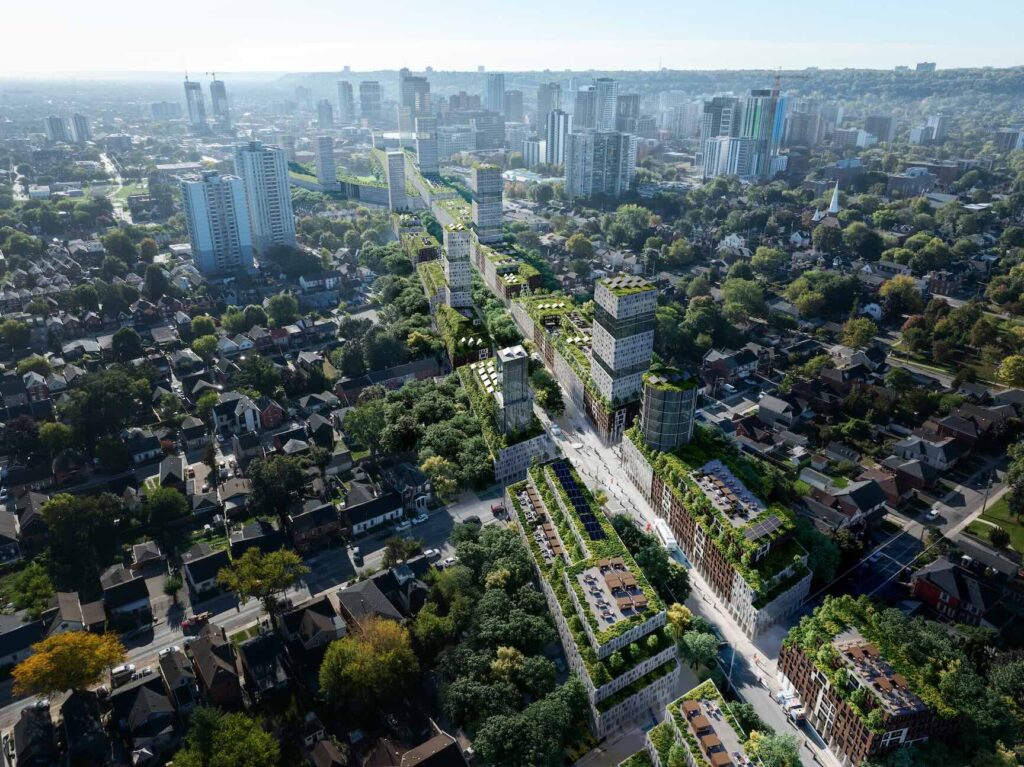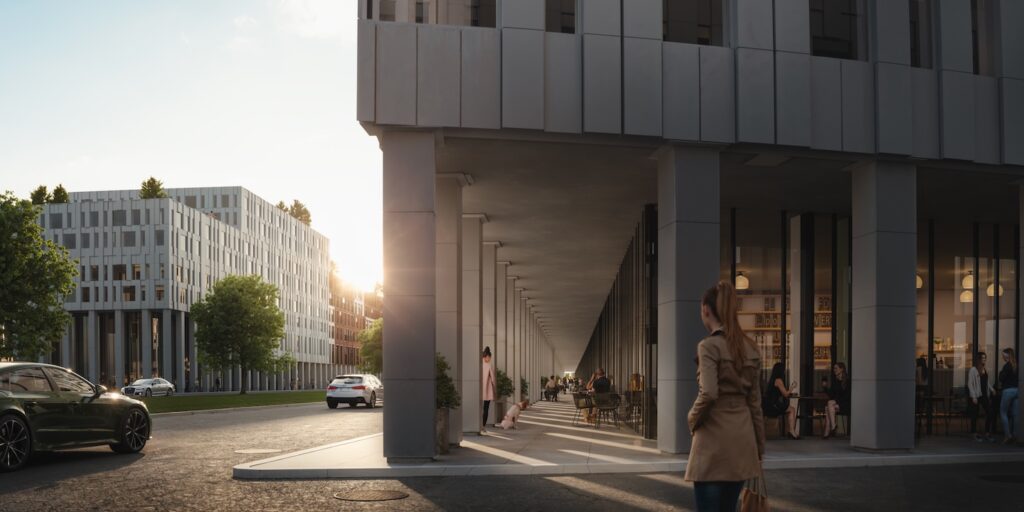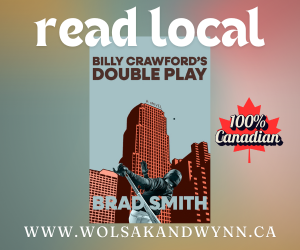OPINION: York Boulevard is a grand vision gone wrong
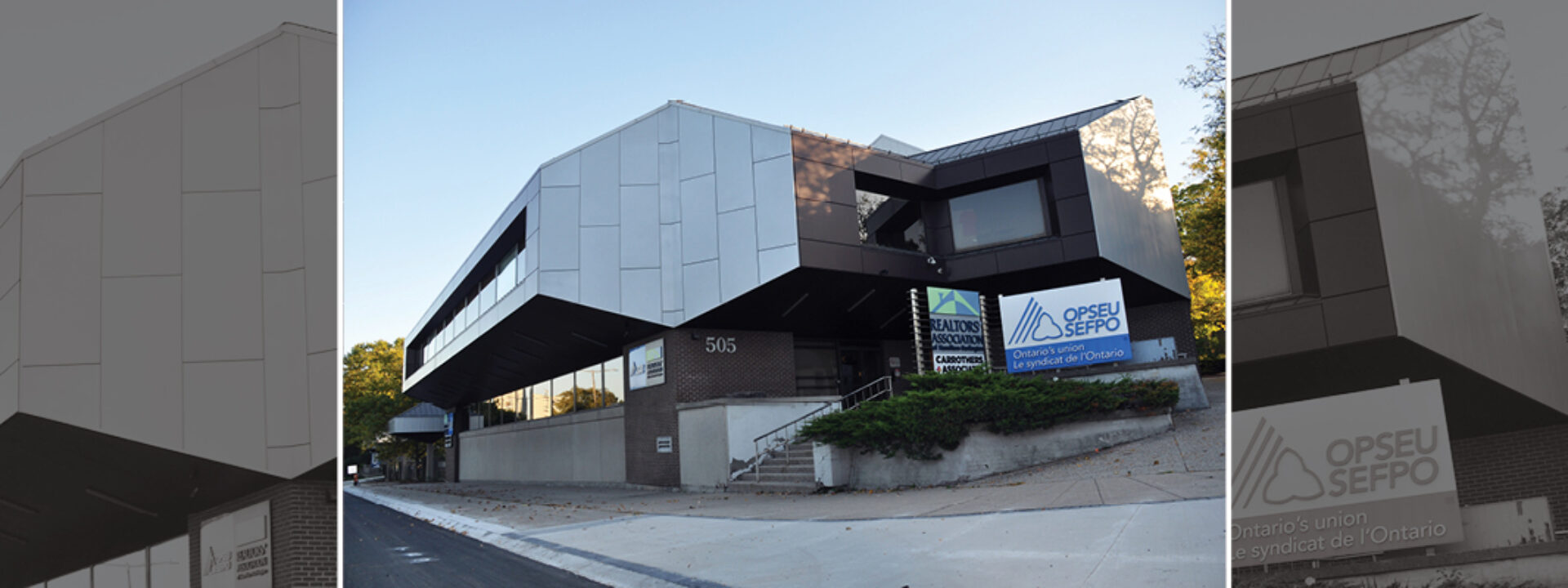
Hamilton’s gateway entrance from the west was once to be modelled after great European streets. But instead of being the ‘Champs Elysee of North America,’ the City caved to private interests and what was built is the architectural horror story it is today. There is a nearly 50-year-old plan for just how to fix it.
York Boulevard is the dramatic entrance to our city, conceived starting with the grand, ambitious McQuesten Bridge of 1932 overlooking Hamilton Harbour, Cootes Paradise and Burlington Heights, over to Dundurn Castle and its park. Then it sputters out. But there was a plan in 1976 to extend the gateway into downtown, inspired by grand European boulevards lined with colonnaded apartment buildings all the way to Bay Street. The reinvention of Copps Coliseum into TD Coliseum as a premiere regional event space demands the completion of York Boulevard. Here is how we can achieve that.
THE VISION
In 1976, a visionary architect named Vladimir Matus working in the Hamilton planning department produced a plan dovetailing with the straightening and widening of York Boulevard to revitalize York and complete it as Hamilton’s grand entrance. His plan included lining the street with mid-rise apartment buildings with retail, restaurants and cafés at street level, as with any great European street. He included a requirement for a continuous 10-foot wide overhang or canopy along the street to shelter pedestrians from the elements and it was adopted by city council, led then by Alderman Bill McCulloch who got the vision. There was to be a gateway or archway at the Highway 403 end and highrises at the downtown end. The City had expropriated much of the land along York Street for the widening, and expected to sell the surplus land for private development afterwards (many parcels along York are still City-owned).
Architecture / urban design: Bill Curran. Animation/rendering: Mirrormax Studio, Max Schramp
HOW IT FAILED
Soon after, a number of merchants and businesspeople sought to buy land along the widened street, but their vision was certainly lacking. As you’d expect, the visionless immediately sought to avoid the planning rules and build what they knew. As Matus notes today, “the first approved application completely violated the just-approved vision.”
City council caved to the squeaky few’s complaints and let them build some sad and very non-urban buildings instead; one- or two-storey buildings, non-retail uses, with surface parking, and most importantly, few built the pedestrian-sheltering, character-giving canopy or colonnade, and City public works staff forced the colonnades that were built back far from the sidewalk so they were useless. A particularly sad Hamilton Spectator article on Nov. 10, 1977 featured realtor Jimmy Wilson’s “expert wisdom” where, despite lacking any development experience or relevant knowledge, he just rejected anything different. Soon after, the plan was dead, thanks to then-Mayor Jack MacDonald, and most anything was allowed to be built. York Boulevard became the unfinished architectural shitshow it remains today.

The Spec’s Tami Paikin laid out the story in an Oct. 9, 1986 article, bemoaning the massive lost opportunity as a “monument to good intentions turned bad.” Alderman Reg Wheeler “waxed eloquent about the Champs-Elysees of North America” that could have been. York Boulevard was abandoned and left bereft. City planners have never tried to fix it.
I tracked down Matus, a warm, affable nonagenarian, in his bespoke highrise Toronto condo to talk about his Hamilton experiences. He is not bitter at the City politicos past, but sad for the missed opportunity to build something unique and world-class. York “needs a new justification and purpose for its existence,” he says, and it is “... an exceptional opportunity for an imaginative architect.”
Matus filled me in on the vision, the failure and the fix.

HOW TO FIX IT
A solid question is why has the City done nothing since the plan was abandoned in the 1970s?
The City planning department has never since put forward a bold vision. Pier 4-7 is an unfinished, windswept, treeless mess of concrete and gravel. Pier 7-8 has a great developer-driven vision that hopefully will get built. The Jamesville redevelopment is a work in progress (I’m part of the design team, full disclosure) but is developer-driven and has potential to be very good. Otherwise, what have we had?
Here is my simple vision for York Boulevard’s rebirth: Go back to the 1970s vision, and double down on it. Incentivize the right things. Just say no to the wrong things. Go to the right people and support them.
Here are the details of what is needed:
- Line both sides of York Boulevard from Dundurn to Bay with minimum eight-storey apartment buildings with commercial uses on the ground floor. Allow taller buildings at major intersections like Locke Street.
- All buildings must have a minimum 10-foot wide colonnade along their full street frontages to provide a public sidewalk, weather shelter and consistent, powerful character. Wider colonnades make perfect patios.
- Require buildings to be built 3 feet from the curb, so the colonnade straddles the sidewalk and does not sit back behind it.
- Rezone all properties within 150 feet of York Street to support this, increasing the values of all these properties. If we do not zone large enough parcels to allow apartment buildings and underground parking garage footprints they will not be built. The original zoning envelope was too small, out of fear of demolishing more houses. Owners can decide to sell for higher-density development or not. Money usually talks. You must break eggs to make an omelette.
- Write a new zoning bylaw to support all this. Do not allow surfacing parking. Require buildings to be built full width of the lot for continuity of the streetwall. Do not allow ground floor incompatible uses like office or residential.
- Reward great architecture with more height, density, and City development fee waivers, as allowed under Section 37 of the Planning Act, which is widely used outside Hamilton.
- Induce a local hero to make the courageous first step as a demonstration project or precedent. Hey, Hamilton Construction Association, can you go from worst offender with your uninspired building at 370 York Blvd. to a 21st-century hero, showing Hamilton how this is done with our local contractors?
WHY BUILD A BOULEVARD? THE POWER OF THE COLONNADE
Covered pedestrian walkways were once very common as a public amenity or obligation, just look at old photos of Gore Park and Hamilton Farmers’ Market areas ringed with huge awnings. Toronto has 25 Esplanade, Market Square and the Park Hyatt Hotel as examples.
European cities have many colonnade examples. Paris’s Rue de Rivoli is a great colonnaded street to emulate. And Place des Vosges is one of the most sublime places, and is lined on all sides with restaurants in its colonnades. The city of Bologna has many colonnades, even on sidestreets. Pedestrian shelter from rain, snow, sun is powerful, as is the feeling of safety from busy traffic such as on Rue de Rivoli.
A UNESCO World Heritage place, the University of Virginia’s amazing and sublime The Lawn, designed by U.S. President Thomas Jefferson in his spare time, remains one of the most powerful spaces in North America. It is the initial UVA campus of small classrooms and dorm rooms wrapped together with a colonnade around a treed lawn. There are many other colonnades from Krakow to Madrid, Louisville and Vicenza.
"When I first learned of the decades-old vision, I was saddened but not surprised that it has yet to be built,” notes accomplished developer Dan Gabriele of Marz Homes. "We used to be a city that had ambitions. Wouldn’t it be great to renew that legacy and finally bring Hamilton's grand boulevard entrance to reality as a bold statement that we are back?”
Noted urban planner Eldon Theodore from MHBC, who is also a member of Hamilton’s Design Review Panel, says York Boulevard deserves to reach the vision set out for it.
“York Boulevard is one of the most unique gateway experiences in and out of Hamilton, offering a sense of arrival unparalleled with other cities in the country. The potential to enhance this gateway through the introduction of denser landmark urbanism to achieve the original vision of a grand avenue would be transformative for the city of Hamilton."
Colonnades are a memorable, desirable urban amenity, unifying a street to huge positive effect. Let’s finish York Boulevard and make it the grand street it could already be.
Bill Curran is a Hamilton architect, urban designer, teacher, small scale developer and sometimes writer with a passion for Hamilton’s memories, lost magnificent buildings and industrial relics.







